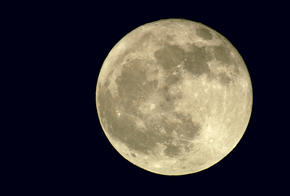
When the Soviet Union put a satellite tv for pc into house in 1957, the USA reacted by creating NASA in 1958. President John F. Kennedy later gave the company the mission of placing a person on the moon earlier than the shut of the Nineteen Sixties. To interact this era within the unique mission of NASA, strive these lunar classes.
Phases of the Moon
The moon is an object of curiosity for kids and adults alike. Poets write about it, scientists research it, and kids dream of touring to it. Observing the phases of the moon over the course of a month helps kids visualize the moon’s path across the earth. As a result of the exercise requires watching the moon for simply over a full month, remember to plan round faculty breaks.
Remind learners that the quantity of the moon that we see within the evening sky is determined by how a lot of it’s illuminated. Attempt sharing The Moon Ebook by Gail Gibbons or Phases of the Moon by Gillia M. Olson as an introduction. Every pupil can be given two white paper plates that represents the moon. Have every particular person write his/her title on the again of one among them. Hold one plate for later.
Process:
Present your younger astronomers coloration one among their plates to symbolize the darkish a part of the moon. You may wish to divide the category into 4 sections and work with every group to paint a unique section. NASA’s picture assortment has some very clear representations of the moon at varied phases, which work properly for this demonstration. Every baby ought to then be assigned an evening to look at the moon. Spacing the observations to each different evening will make the adjustments extra noticeable. For those who stretch the observations so {that a} new moon cycle begins, it can enable them to see how the sample repeats every month.
Each time a plate is returned, hold it throughout the highest of the white board or across the fringe of the science bulletin board in order that the entire class can see how the moon is altering, little by little.
Craters on the Moon
A technique that scientists can decide the age of a newly found planet or moon is by learning its floor craters. Extra craters imply an older floor. Water molecules from under the floor of Mars have not too long ago been found close to affect craters and can be represented by cake sprinkles. On this exercise, the category may have the chance to check how affect craters kind and what scientists can study deeper layers by learning what’s on the floor.
The patterns of particles that seem round every crater are referred to as ejecta patterns, or rays. Regolith is a scientific title for pulverized lunar rocks. When the moon’s floor is smashed by incoming rocks, it turns to a superb powder, represented by the flour and cocoa powder.
For every group you’ll need:
- 9×9 plastic or steel pan
- 2 cups of flour
- 1 desk spoon of cake sprinkles (not white or brown)
- ½ cup superb sand (not white or brown)
- 1/4 cup of cocoa powder
- 1 small pebble
- 2 bigger pebbles
Process:
Layer the flour, cake sprinkles, coloured sand, and cocoa powder within the pan separately. For one of the best outcomes, use a sifter or colander to make even layers. Instruct members to select up the smallest pebble and drop it into one nook from shoulder top. Have them snap a photograph of the sample made. Within the reverse nook, they need to drop the biggest pebble from the identical top. Once more, they need to snap a photograph. Now have your younger scientists drop the opposite massive pebble into the middle of the pan from above their heads and take an image. Relying on the age (and goal) of your college students, one of many pebbles could be thrown in order that it strikes the floor at an angle, which is able to produce a really completely different ejecta sample. Or the instructor can do that for the group.
Questions for Dialogue:
- What number of completely different layers of regolith could be seen across the craters? What does this reveal concerning the pressure of the affect?
- If any cake sprinkles have made it to the floor, inform the members that the sprinkles symbolize water molecules within the type of ice, which could not in any other case be detectable.
- What may their look inform scientists concerning the planet?
- How does the ejecta sample change with the dimensions of the pebble?
- What adjustments happen when the peak from which the pebble is dropped will increase?
Though NASA’s mission has modified many occasions since its institution in 1958, its deal with analysis and purposes of recent applied sciences has not. You’ll be able to uncover different space-related investigations in your class on Lesson Planet.
Area-Associated Classes:
Photo voltaic System
Individuals get a hands-on lesson on how the moon orbits the earth and the way the earth orbits the solar. Acceptable for grades 2-6. The lesson could be accomplished in a single class interval with a bit of prep time beforehand.
Doin’ the Moon Stroll
Enable a number of days to finish the partaking actions on this set of classes. Though written for grades Ok-2, the actions might be made extra complicated to attraction to older learners. A number of the studying aims embrace: figuring out the dimensions of the moon in relation to Earth, investigating the supply of the moon’s gentle, and describing the variations between the surfaces of the moon and the earth.
Exploring the Far Facet of the Moon
This informative article supplies lesson concepts to help your budding scientists’ curiosity within the moon. It provides many useful resource hyperlinks in addition to methods to analyze the moon’s affect on ocean tides.

